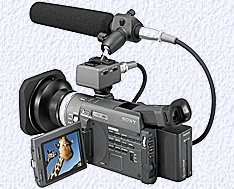When planning our sequence we came up with many different ideas of what we could do but our whole group agreed that we wanted to do something psychological. Most of us also wanted to steer away from the typical horror conventions. Eventually we started thinking about time and once we got into this I suddenly had the idea of doing parallell worlds. All of us thought this was a really good idea and we started planning this thriller and came up with the idea of seeing the worlds split and seeing nerwspaper cutouts which would work quite well as you could develop and interesting storyline from this. I went home on the weekend and thought more about this and had the idea of Hitler's mom ice skating whilst she was pregnant and falling and losing her baby. This would be one of the points were the world splits. I also did some research on a scientist who actually proved that parallell worlds could be real.
I then came back after the weekend and found out that someone in my group thought that this was too complicated so they cnaged the idea. We are now doing something involving seeing the world differently to what it is where the protagonist sees everything very tidyly whilst in fact everything is messy and dirty. So we see the main person walk into a dark and messy room and we cut to a point of view shot where everything is clean and untouched and perfect.. We thought that we would watch him type on his computer and get the title from a word document by certain letters lighting up and moving to the side. He then walks outside and sees a couple kissing whilst they are actually fighting again showing the contrasting perception of the way he sees the world and of the way everyone else sees the world.
Some otrher ideas we came up with at thje beginning were the use of phobias so we went onto a website and wrote out all the unusual phobias which could possibvly fit and we sort of saw a pattern of numbers and weird symbols. We then did some research and found out that Jim Carey did a cinema movie which was based exactly on those themes so we had to abandon this idea and move on.
The idea which we have now stuck with is the idea of the percepted vision of the world. We will start this by having our main character walk into his office and have an establishing shot of what the world looks like, we then cut to a POV shyot and see everything tidy. He goes over and sits on his computer and we were going to use a dutch shotto see him opening the computer. Whilst he is opening we were going to include the titles subtly through him typing and printing things off. We then thought about watching him on his journey home/ to work and just having this split vision. Another poiunt we argued about was whether to have him be poor or have a high status job. We then decided that it would be best for him to have a good job to see how much he can drop in society once he goes mad just because it would be lacking storyline afterwards. We considered using dialogue but decided against it as our opening sequence would be a video montage and dialogue might just look a bit out of place. We will have non diegetic sound though I believe just because music often acts as a stimulus to create certain emotions.
One very clever opening sequence is panic room where the titles are integrated into the landscape in 3D















 here his eye is on a hot spot and he is taking up two thirds of the frame which makes a nice image composure and works well together.
here his eye is on a hot spot and he is taking up two thirds of the frame which makes a nice image composure and works well together. 